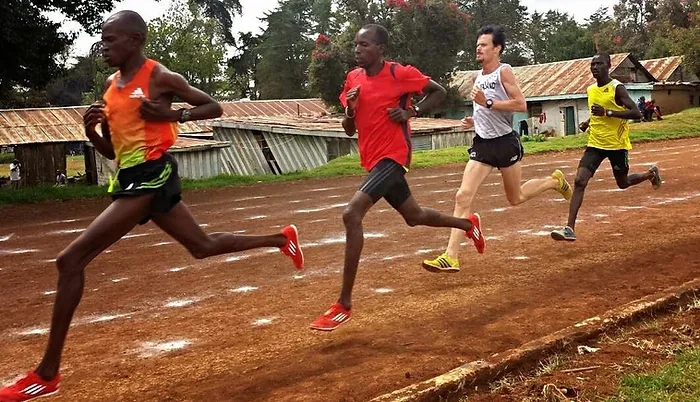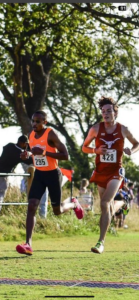Video
The first thing people need to do to improve their running technique is to take some videos. The easiest way to do this is to prop your cell phone up while you’re on the treadmill. If you can get someone to ride a bike alongside you while running, that works really well, too!
Once you have video of your stride, you have many options. You might be able to see some things you need to correct that you can try to do on your own. Or if you decide to work with a professional, you’ll have somewhere to start and some footage to show them.

Avoid Heavy Hands
The easiest place to start when tackling improving running technique is the arms. The first thing I’m looking for when watching someone’s running form is the height of their hands during all the phases of running. We want to avoid “Low Hands” or hands down by our pockets during the downward phase of our arm swing. A cue I give to athletes is going ribs to the chin. The low point is down at our ribs and towards our backs, and our upswing is going up towards our chin and sternum. Our feet follow our hands. If the hands go up and forward, so will our feet, giving us more lift and better propulsion. Low hands get low feet, which brings a shuffle stride without much lift.
Close the Elbow Angle

Next, and tied to the first point, is elbow angle. Many runners need to slightly close the angle where their forearm meets their bicep. This will help keep our hands up and prevent us from having ‘heavy hands’ where we drop them aggressively in the downswing. We lose a lot of stored energy when that forearm drops aggressively. Keep the elbow angle slightly higher.
Forward Lean
The third cue for running technique is to have a slight forward lean. Being upright or leaning back is our natural braking mechanism. If we’re running and constantly leaning back, then we will be slightly braking the entire time, losing heaps of energy. People talk all the time about our feet falling underneath our center of mass while running. Many injuries can be attributed to overstriding or our feet landing far in front of our bodies, mainly the hips. But if we’re leaning back, they have to! It’s the only way we can balance ourselves. A slight forward lean gets the feet back in the ideal force-loading position and lets us tap into the momentum we’re building with each stride. When you find the right angle of forward lean, most folks will also notice that this position is also where they can more fully access their glutes!
Relaxed Shoulders
The last thing to think about is how you’re holding your shoulders. They need to be down and relaxed. If our shoulders aren’t neutral, we’ll tense up, altering our arm carriage. Relax the shoulder so our arms can find the right path for them to swing, which isn’t always directly straight forward and back. Most people’s shoulder joints will have their elbows slightly flare out, which is natural.

Ignore Your Cadence
Something you really want to avoid early on is checking cadence. More and more studies show massive variances in cadence among runners. It all depends on your height, movement patterns, pace, and many other factors. Find where you move the most comfortably with good form, and cadence will end up where it needs to be. Don’t reverse it.
There was a bad study a long time ago that said 180 steps per minute was some magical number and all runners should run at that cadence. There have since been MANY studies disproving that but for some reason that 180 number stuck around way too long.

Starting out
Now there’s certainly more to it and form can take a very long time to change. Many of us have been running for decades and our form isn’t going to magically change overnight. Give it time and schedule check ins for yourself to video and review your progress.
Putting It All Together
Improving your running form isn’t about tackling everything at once. It’s about understanding, observing, and making incremental changes. Start by taking videos of your stride. This is your baseline, your foundation for improvement.
Focus on one aspect at a time. Start with your arms. Keep your hands high and light. Remember, your feet follow your hands. When your hands move with purpose, so do your feet. Tighten that elbow angle, store that energy. It’s all about efficient movement.
Once you’ve mastered your arms, move to your posture. Lean forward, just a little. It’s not a dramatic change, but it makes a world of difference. This slight forward lean helps you harness momentum, reduces braking, and engages your glutes.
Next, relax your shoulders. Tension here throws everything off. Let your shoulders drop and your arms swing naturally. It’s about finding your natural path, not forcing a perfect one.
And cadence? Ignore it. Your perfect rhythm is yours alone. Studies and averages can’t capture your unique stride. Focus on comfort and form, and your cadence will find itself.
This journey is about small, consistent changes. Observe, adjust, and practice. By focusing on one thing at a time, you can make meaningful, lasting improvements. That’s how you run better. Enjoy the process and happy running!



